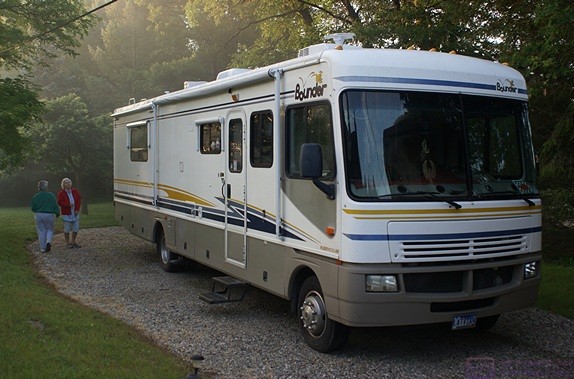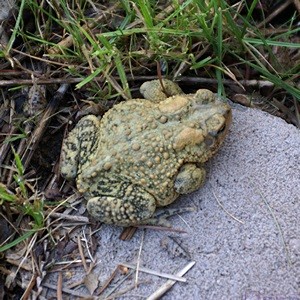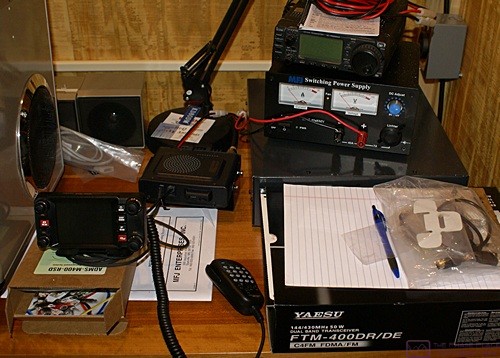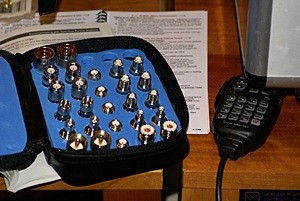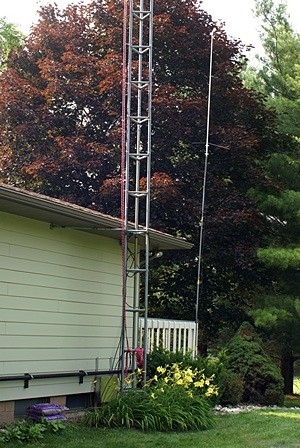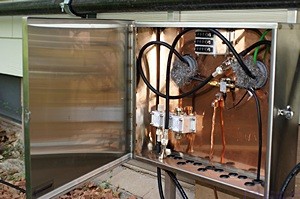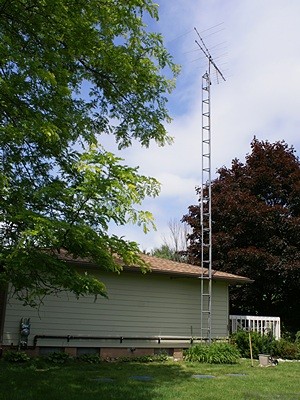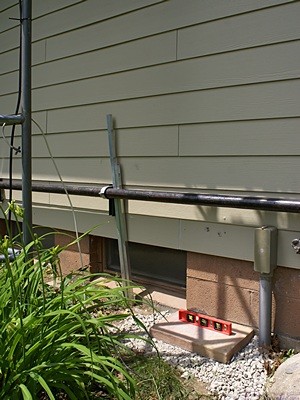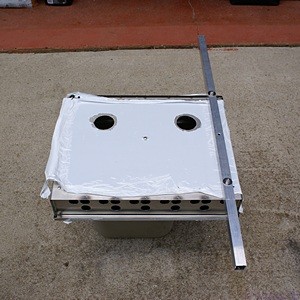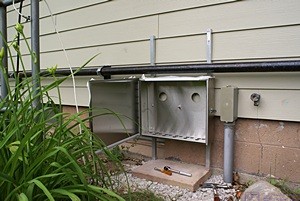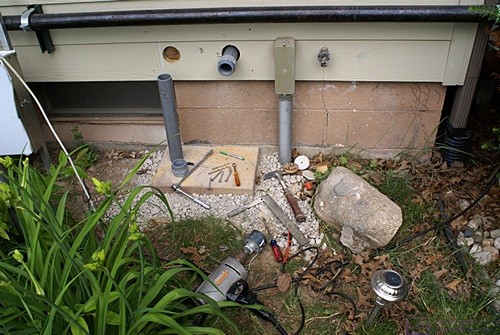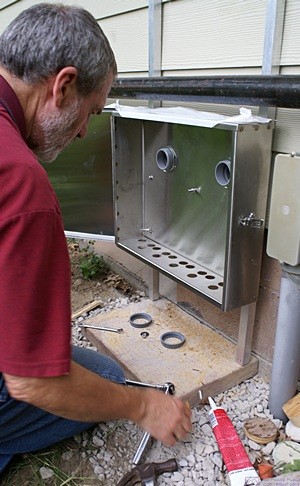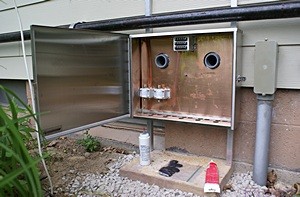Linda was up at 6 AM and left for the bakery around 6:20 AM, I think. I was more asleep than awake and did not get up until later. I wanted to do a load of laundry but needed powdered detergent which I did not have. I also needed to make a run to Lowe’s so I left to take care of my errands without making coffee or having breakfast.
I picked up a couple of 2x4s at Lowe’s that I will use to cut a pair of support arms for propping open the fixed window in the bus while we exchange the refrigerators. I was going to buy a 4’x4′ (half sheet) of plywood to cut for the base of the refrigerator alcove but did not care for the selection. I also did want to wrestle with the size and weight by myself. I will have to go back to The Home Depot with Linda to get what I need. I got my laundry supplies across the street at Meijer’s and headed home.
After unloading the 2x4s I thought I would program the remote control in my car for the new garage door opener. The procedure is very simple but much to my dismay the remote would not connect with the opener. The remote is a 3-button model made by Chamberlin, and both garage door openers are identical Chamberlin models. We have four of these 3-button remotes, one for me, one for Linda, and one for each of our children. We got the 3-button model because we have two overhead doors on our garage and plan (hope) to have a barn someday with an overhead door. All four of the 3-button remotes programmed to the large garage door without a problem and the new door opener came with a single button remote that works just fine, as did the large garage door opener. I won’t know if the problem is the opener or my remote until I can try programming Linda’s remote. If her remote will program then I know it’s my remote, but if it won’t program I still won’t know where the problem lies.
I had originally planned to mask off the interior of the bus today so I could start sanding the floor tomorrow but decided to put it off. Not only would the painter’s plastic be difficult to manage by myself, I realized that it did not make a lot of sense to tape it up in advance of doing the refrigerator swap. I was on the phone with Chuck arranging to bring our bus to his shop this weekend to take care of the refrigerators when our USPS carrier, Michelle, came to the door bearing gifts. Well, OK, they were packages, but I did not expect them until tomorrow so that made them more like gifts in my mind. One was from Amateur Electronics Supply (AES) and the other was from Morgan Manufacturing, so it was all ham radio stuff.
I went to my ham shack/office and mounted the control head for the Yaesu FTM-400 on the stand that just arrived from AES. I e-mailed Steve (N8AR) to arrange a time to test the lightning arrestor before installing it in our cable entry box. I then e-mailed Jarel to start trying to arrange a day next week to drive to his shop in Logansport, Indiana to pick up the custom walnut desk. Finally, I e-mailed Josh at Coach Supply Direct to make sure he was going to be around. I was checking out the TVFool.com website, which Steve recommended, when the art frame shop in Howell called to let us know that three of our four paintings were ready to pick up. They would have all been done but he ordered the forth frame the wrong size and had to reorder it. Linda then called to let me know she was on her way home from the bakery. So much communication, so little time.
When Linda got home we discussed going out to dinner and researched a new place that had opened in Howell. As usually happens, however, there is almost no place that serves anything we choose to eat and we ended up staying home. Linda had a couple of Boca burgers in the freezer and we had those with corn-on-the-cob and fresh fruit (peaches, nectarines, and strawberries). We eat better food, and in smaller quantities, when we dine at home.
After dinner I caught Steve (N8AR) on the radio and we agreed that I would bring the lightning arrestor over to his QTH at 8 PM. I had an e-mail related to the draft of the July issue of Bus Conversion Magazine and checked to make sure a correction had been made correctly.
At Steve’s house my lightning arrestor tested better than the previous one, and should work OK in my system, but it was very clear that there is something wrong with the design and/or manufacturing of these VHF/UHF I.C.E. units. We also came to the conclusion that the quality control testing the manufacturer was doing (if any) was inadequate to reveal the problem. I expect, however, that this one will work when I install it so if it is typical of their units most hams would not have a reason to suspect that it was flawed. Someone would have a problem with it, however, as it is clearly not usable for all frequencies from 40 MHz to 1 GHz as stated on the label. My unit has a 0.31 dB loss at 445 MHz (it should be 0.01) but has an 11.59 dB loss around 635 MHz, which is a huge factor of 16 times loos of signal, and the loss from 500 MHz to 1 GHz is unacceptably large making it useless in that range of frequencies.
Steve captured all of the data and e-mailed it to me. He then tested one of his Polyphaser lightning arrestors and sent me that data file. He also sent me the link to the VNWA software from SDR-Kits.com that I needed to work with the data file. We spent a few minutes talking about the problem we are having at home with our ham radio transmissions interfering with our OTA TV signals. He sent me a link to the free student version of the ELSIE (“L”,”C”) filter design software.
I left about 9:45 PM and called my friend, John Rauch, to see if Saturday noon would work for him in terms of our refrigerator swap. He said it would and that he would check with his son (also John) to see if he could/would also help. I will let Chuck know tomorrow that it looks like Saturday is a “go.”
Linda was asleep by the time I got home so I worked in my office until after midnight. I captured the data attached to the e-mails from Steve and then downloaded and installed both the VNWA and the ELSIE software. I then uploaded my personal blog posts for June 28, 29, and 30. I logged in to the FMCA Freethinkers website, the FMCA GLCC website, and the SLAARC website and installed updates for the themes and numerous plug-ins. With that I came back upstairs and worked on this post in the living room so as not to disturb Linda and finally went to bed around 1 AM.
